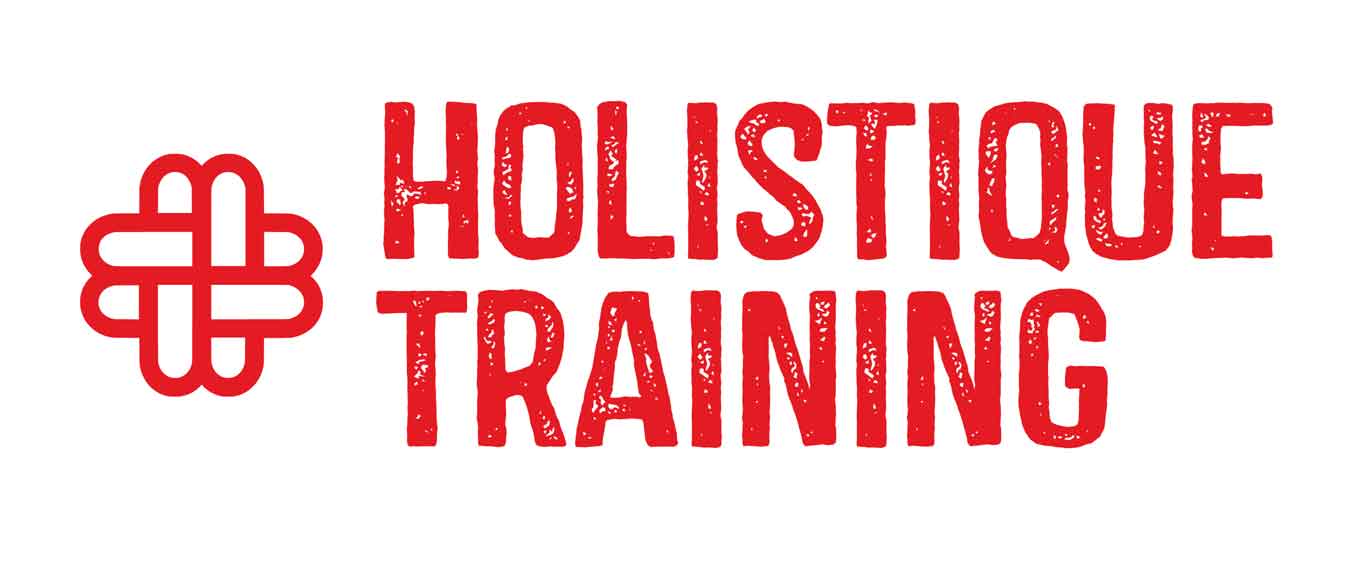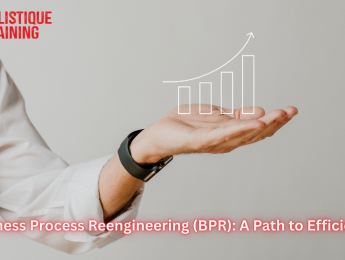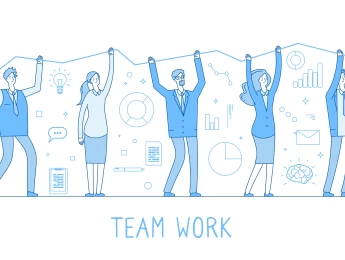- Table of Contents
- Introduction
- What is Business Process Reengineering (BPR)?
- History of BPR
- Why Do Organizations Implement BPR?
- Inefficiencies in Existing Processes:
- Technological Advancements:
- Increased Competition:
- Customer Demands:
- Cost Pressures:
- Mergers and Acquisitions:
- Benefits of BPR
- Cost Reduction:
- Improved Productivity:
- Enhanced Customer Satisfaction:
- Increased Agility:
- Better Use of Technology:
- Employee Empowerment:
- How These Benefits Work Together
- Steps of the BPR Process
- 1. Define Objectives and Scope
- 2. Assemble a Cross-Functional Team
- 3. Analyze Existing Processes
- 4. Design the New Process
- 5. Implement the Changes
- 6. Monitor and Optimize
- Bringing It All Together
- BPR Team Member Roles
- 1. Executive Sponsor
- 2. BPR Project Leader
- 3. Process Owner
- 4. Subject Matter Experts (SMEs)
- 5. IT Specialists
- 6. Change Management Specialists
- 7. Data Analysts
- 8. End-User Representatives
- How These Roles Work Together
- Example Use Case of BPR
- BPR and Digital Transformation
- Difference Between BPR and BPI (Business Process Improvement)
- Conclusion
Introduction
Organizations are constantly searching for innovative ways to improve efficiency, reduce costs, and enhance customer satisfaction. In a competitive world where adaptability determines survival, companies must rethink how they operate to stay ahead. One powerful strategy that has transformed organizations globally is Business Process Reengineering (BPR). This blog post delves into the concept of BPR, exploring its history, benefits, implementation process, and its role in digital transformation. We’ll also compare it to Business Process Improvement (BPI) and provide a real-world use case to illustrate its impact.
What is Business Process Reengineering (BPR)?
Business Process Reengineering (BPR) is a strategic approach to improving an organization’s workflows, operations, and overall performance by fundamentally rethinking and redesigning core business processes. The goal of BPR is not to make incremental improvements but to achieve dramatic results—often involving cost reduction, improved quality, faster delivery times, or enhanced customer satisfaction.
Rather than tweaking existing processes, BPR challenges organizations to start with a blank slate, asking, “If we were to design this process from scratch, how would we do it?” This mindset encourages innovation and eliminates inefficiencies that may have been ingrained in the organization over time.
BPR focuses on aligning processes with the organization’s goals and leveraging technology to streamline operations. It is a bold, transformative approach that requires commitment, collaboration, and a willingness to embrace change.
History of BPR
The concept of BPR gained prominence in the early 1990s, thanks to the work of Michael Hammer and James Champy. In their seminal book, Reengineering the Corporation: A Manifesto for Business Revolution (1993), Hammer and Champy argued that incremental improvements were no longer sufficient in a rapidly changing business environment. Instead, they advocated for a radical redesign of business processes to achieve dramatic improvements in performance.
Hammer famously stated, “Reengineering is the fundamental rethinking and radical redesign of business processes to achieve dramatic improvements in critical, contemporary measures of performance, such as cost, quality, service, and speed.” This definition became the foundation of BPR.
The rise of BPR coincided with advancements in information technology, which provided organizations with the tools to automate and optimize processes. Companies such as Ford, General Electric, and IBM became early adopters of BPR, showcasing its potential to transform operations and deliver significant results.
Although BPR faced criticism in the late 1990s due to its association with large-scale layoffs and organizational disruption, its principles remain relevant today, especially in the era of digital transformation.
Why Do Organizations Implement BPR?
Organizations implement Business Process Reengineering (BPR) when they recognize the need for transformative change to overcome challenges or seize new opportunities. Unlike incremental improvements, BPR addresses fundamental inefficiencies and misalignments in processes, offering a chance to rethink operations from the ground up. Below, we delve deeper into the six main causes that drive organizations to undertake this bold initiative:
Inefficiencies in Existing Processes:
Over time, as organizations grow and evolve, their processes often become bloated, redundant, or overly complex. These inefficiencies may result from outdated practices, legacy systems, or fragmented workflows that no longer align with the organization’s goals. For example, manual approval processes, excessive paperwork, or siloed departments can slow down operations and lead to unnecessary costs. By implementing BPR, organizations can eliminate these inefficiencies, streamline workflows, and create processes that are faster, simpler, and more effective.
Technological Advancements:
Rapid advancements in technology have revolutionized how businesses operate. Tools like artificial intelligence, robotic process automation (RPA), cloud computing, and big data analytics offer opportunities to optimize processes in ways that were previously unimaginable. However, to fully leverage these technologies, organizations often need to redesign their processes. For instance, automating a workflow without first rethinking its structure might simply replicate inefficiencies in a digital format. BPR ensures that processes are optimized before technology is applied, enabling organizations to unlock the full potential of innovation.
Increased Competition:
In today’s globalized economy, competition is fiercer than ever. Companies must differentiate themselves by offering better products, faster services, or more personalized customer experiences. Falling behind competitors can result in lost market share, reduced profitability, and even obsolescence. BPR helps organizations gain a competitive edge by rethinking how they deliver value to customers. For example, reengineering a supply chain process can reduce lead times, improve product quality, and lower costs, giving the organization a distinct advantage in the marketplace.
Customer Demands:
Modern customers have higher expectations than ever before. They demand faster delivery, seamless experiences, and personalized interactions. Failing to meet these demands can result in customer dissatisfaction and loss of loyalty. BPR allows organizations to align their processes with customer needs, ensuring that they can deliver exceptional value. For instance, a retailer might reengineer its order fulfillment process to enable same-day delivery, or a bank might redesign its customer onboarding process to make it faster and more user-friendly.
Cost Pressures:
Rising operational costs can erode profitability and limit an organization’s ability to invest in growth. Whether it’s labor costs, material expenses, or overhead, inefficiencies in processes often contribute to these financial pressures. BPR enables organizations to identify and eliminate waste, reducing costs while maintaining or even improving quality. For example, a manufacturing company might reengineer its production process to minimize material waste and reduce energy consumption, resulting in significant cost savings.
Mergers and Acquisitions:
When two companies merge or one acquires another, they often face the challenge of integrating their operations. Redundant processes, conflicting systems, and cultural differences can create inefficiencies and hinder the realization of synergies. BPR provides a framework for harmonizing processes, eliminating redundancies, and creating a unified operational model. For instance, after a merger, an organization might reengineer its procurement process to consolidate suppliers and negotiate better terms, resulting in cost savings and improved efficiency.
By addressing these causes, BPR provides a pathway for organizations to not only overcome challenges but also position themselves for long-term success. It is a proactive strategy that enables companies to reinvent themselves, adapt to changing circumstances, and deliver greater value to stakeholders. The decision to implement BPR is not taken lightly, as it requires significant investment and commitment, but the rewards can be transformative.
Benefits of BPR
The benefits of Business Process Reengineering are significant and far-reaching. When implemented effectively, BPR can transform an organization’s performance and create a competitive advantage. Some of the key benefits include:
Cost Reduction:
One of the most immediate and measurable benefits of BPR is the reduction in operational costs. By eliminating redundant tasks, streamlining workflows, and automating processes, organizations can significantly lower expenses. For example, reengineering a supply chain process might reduce the need for intermediaries, thereby cutting transportation and warehousing costs. Similarly, automating manual tasks like data entry can decrease labor costs while improving accuracy. Cost savings achieved through BPR can free up resources for investment in other critical areas, such as innovation, marketing, or employee development.
Improved Productivity:
BPR enables organizations to maximize the efficiency of their workforce by eliminating unnecessary steps and focusing on value-added activities. Employees can spend more time on strategic, high-impact tasks rather than getting bogged down by repetitive or low-value work. For instance, a customer service team might benefit from reengineered processes that reduce the time spent on administrative tasks, allowing them to focus more on resolving customer issues. This boost in productivity not only improves operational performance but also enhances employee satisfaction, as team members feel their work is meaningful and impactful.
Enhanced Customer Satisfaction:
In today’s customer-centric business environment, meeting and exceeding customer expectations is critical. BPR helps organizations deliver better products and services by rethinking processes from the customer’s perspective. Faster delivery times, improved product quality, and seamless customer experiences are just a few of the outcomes that BPR can achieve. For example, a retail company might reengineer its order fulfillment process to ensure that customers receive their purchases within 24 hours, significantly improving satisfaction and loyalty. By aligning processes with customer needs, BPR enables organizations to create lasting value and build stronger relationships with their clients.
Increased Agility:
The business landscape is constantly evolving, with new challenges and opportunities emerging at a rapid pace. Organizations that fail to adapt risk falling behind their competitors. BPR equips businesses with the agility to respond quickly to changes in the market, industry, or regulatory environment. By simplifying and streamlining processes, organizations can reduce the time it takes to implement new strategies, launch products, or enter new markets. In fact,according to a study by Accenture, as cited by Kiss Flow, two-thirds of companies implementing reengineering achieved over a 500% improvement in at least one of their processes. For example, a financial institution might reengineer its loan approval process to reduce turnaround times, enabling it to respond more effectively to changes in customer demand or economic conditions.
Better Use of Technology:
Technology is a key enabler of BPR, providing organizations with the tools to automate tasks, analyze data, and optimize workflows. However, simply adopting new technology without rethinking processes often leads to suboptimal results. BPR ensures that processes are designed to fully leverage technological capabilities, unlocking their potential to drive efficiency and innovation. For instance, implementing a customer relationship management (CRM) system as part of a BPR initiative can enable an organization to personalize interactions, track customer journeys, and make data-driven decisions. By integrating technology into redesigned processes, BPR helps organizations stay at the forefront of digital transformation.
Employee Empowerment:
While BPR is often associated with organizational restructuring, it also has the potential to empower employees by providing them with the tools, clarity, and autonomy they need to succeed. Simplified processes and well-defined roles eliminate confusion and reduce the burden of unnecessary tasks, allowing employees to focus on meaningful work. Additionally, reengineered processes often involve cross-functional collaboration, fostering a sense of teamwork and shared purpose. For example, a BPR initiative in a manufacturing company might involve redesigning production workflows to give employees greater control over quality checks, resulting in higher engagement and job satisfaction.
How These Benefits Work Together
The benefits of BPR are not isolated; they often reinforce one another to create a ripple effect of positive change across the organization. For example, cost reductions achieved through streamlined processes can free up resources to invest in technology, which in turn enhances productivity and customer satisfaction. Similarly, empowering employees can lead to better decision-making and innovation, further driving agility and competitiveness.
Ultimately, the transformative power of BPR lies in its ability to align processes with organizational goals, eliminate inefficiencies, and create a culture of continuous improvement. While the initial implementation of BPR may be challenging, the long-term rewards—ranging from financial savings to improved customer loyalty—make it a worthwhile investment for organizations seeking to thrive in an ever-changing business environment.
Steps of the BPR Process
Implementing BPR requires a structured approach to ensure success. While the specifics may vary depending on the organization, the following six steps provide a general framework for the BPR process:
1. Define Objectives and Scope
The foundation of any successful BPR initiative lies in clearly defining its objectives and scope. This step involves identifying the specific goals the organization aims to achieve through reengineering and determining the processes to be targeted.
Organizations must ask critical questions such as:
- What are the pain points in our current processes?
- Which processes are most critical to achieving our business goals?
- What outcomes do we expect (e.g., cost reduction, faster delivery, higher customer satisfaction)?
By setting clear objectives, organizations can ensure that the BPR initiative remains focused and aligned with their strategic priorities. Additionally, defining the scope helps avoid overextending resources or trying to reengineer too many processes at once. For instance, a company might choose to focus on reengineering its customer service process rather than tackling all operational workflows simultaneously.
This step also involves securing buy-in from key stakeholders, including executives and department heads, to ensure that the initiative has the necessary support and resources to succeed.
2. Assemble a Cross-Functional Team
BPR is not a one-person job; it requires a diverse team with expertise across various functions of the organization. Assembling a cross-functional team ensures that all perspectives are considered during the reengineering process.
The team typically includes:
- Executive Sponsor: A senior leader who provides strategic direction and ensures alignment with organizational goals.
- Process Owner: Someone with in-depth knowledge of the process being reengineered.
- Subject Matter Experts (SMEs): Employees who work closely with the process and understand its nuances.
- IT Specialists: Experts who can identify and implement technological solutions.
- Change Management Specialists: Professionals who guide employees through the transition and address resistance to change.
The diversity of the team fosters collaboration and innovation, as members bring different insights and ideas to the table. For example, an IT specialist might propose automation tools that a process owner hadn’t considered, while an SME might highlight practical challenges that could arise during implementation.
The team’s role is not only to design the new process but also to communicate with the broader organization, ensuring transparency and fostering support for the initiative.
3. Analyze Existing Processes
Before designing a new process, it’s essential to thoroughly understand the current one. This step involves mapping out the workflow, identifying inefficiencies, and pinpointing areas for improvement.
Key activities in this step include:
- Process Mapping: Creating a visual representation of the workflow, including every step, decision point, and stakeholder involved.
- Data Collection: Gathering quantitative and qualitative data to measure process performance, such as cycle times, error rates, or customer complaints.
- Identifying Bottlenecks: Pinpointing delays, redundancies, or unnecessary steps that hinder efficiency.
For example, a company analyzing its order fulfillment process might discover that orders are delayed due to excessive manual approvals or poor communication between departments. By understanding these pain points, the team can focus on redesigning the process to address them.
This step is crucial because it provides the baseline against which the success of the new process will be measured. Without a clear understanding of the current process, it’s impossible to determine whether the reengineering effort has achieved its goals.
Table: Metrics to measure the effectiveness of BPR
4. Design the New Process
This is the creative and transformative stage of BPR, where the team develops a blueprint for the redesigned process. The goal is to create a workflow that eliminates inefficiencies, leverages best practices, and aligns with organizational objectives.
Key considerations during this step include:
- Customer-Centric Design: Ensuring that the new process delivers value to customers, whether through faster service, higher quality, or better experiences.
- Leveraging Technology: Identifying tools and systems that can automate tasks, improve communication, or provide real-time data insights.
- Simplification: Eliminating unnecessary steps and reducing complexity to create a streamlined workflow.
- Compliance and Risk Management: Ensuring that the new process adheres to regulatory requirements and minimizes potential risks.
For example, a healthcare provider redesigning its patient intake process might implement an online portal that allows patients to complete forms before their visit, reducing wait times and administrative workloads.
The new process design should be documented in detail, including flowcharts, timelines, and resource requirements. This documentation serves as a roadmap for implementation and ensures that everyone involved understands the changes.
5. Implement the Changes
Once the new process has been designed, it’s time to put it into action. Implementation is often the most challenging step, as it requires careful planning, coordination, and communication to minimize disruption.
Key activities during this step include:
- Pilot Testing: Rolling out the new process on a small scale to identify potential issues and make adjustments before full implementation.
- Training: Ensuring that employees understand the new process, their roles, and how to use any new tools or systems.
- Change Management: Addressing resistance to change by communicating the benefits of the new process and providing support to employees.
- Resource Allocation: Ensuring that the necessary resources, such as budget, technology, and personnel, are in place to support the new process.
For example, a retail company implementing a reengineered inventory management process might start with a single store before expanding to all locations. This phased approach allows the organization to test the process, gather feedback, and refine it before scaling up.
Successful implementation requires ongoing communication with stakeholders to ensure alignment and address any concerns that arise during the transition.
6. Monitor and Optimize
The final step of the BPR process is to continuously monitor the performance of the new process and make adjustments as needed. This ensures that the process continues to deliver the desired outcomes and adapts to changes in the business environment.
Key activities in this step include:
- Performance Measurement: Tracking key metrics such as cycle times, error rates, costs, or customer satisfaction to evaluate the effectiveness of the new process.
- Feedback Collection: Gathering input from employees, customers, and stakeholders to identify areas for improvement.
- Continuous Improvement: Making incremental changes to optimize the process and address any issues that arise.
For example, a logistics company that reengineered its shipping process might use real-time tracking data to identify delays and make adjustments to improve delivery times.
Monitoring and optimization are ongoing activities that ensure the process remains relevant and effective over time. Organizations that embrace a culture of continuous improvement can build on the success of their BPR initiatives and maintain a competitive edge.
Bringing It All Together
The six steps of the BPR process provide a comprehensive framework for transforming outdated processes into efficient, innovative workflows. Each step builds on the previous one, ensuring that the initiative is well-planned, collaborative, and results-driven.
While BPR requires significant effort and commitment, the rewards—ranging from cost savings to improved customer satisfaction—make it a worthwhile investment. By following these steps, organizations can achieve dramatic improvements in performance and position themselves for long-term success.
BPR Team Member Roles
Successful BPR initiatives require a dedicated team with clearly defined roles. Key team members typically include:
1. Executive Sponsor
The executive sponsor is typically a senior leader or C-level executive who champions the BPR initiative within the organization. This individual provides strategic direction, secures resources, and ensures alignment with the organization’s overarching goals.
Key Responsibilities:
- Defining the vision and objectives of the BPR initiative.
- Gaining buy-in from other executives and stakeholders.
- Allocating the necessary budget, tools, and personnel for the project.
- Addressing roadblocks and ensuring organizational support for the team.
- Monitoring progress and holding the team accountable for results.
The executive sponsor plays a critical role in maintaining momentum and overcoming resistance to change. For example, if employees are hesitant about adopting a new process, the sponsor can communicate the long-term benefits and reinforce the organization’s commitment to the initiative.
2. BPR Project Leader
The project leader is responsible for managing the day-to-day activities of the BPR initiative. This individual acts as the central point of coordination, ensuring that the team stays on track and that milestones are achieved.
Key Responsibilities:
- Developing the project plan, including timelines, deliverables, and milestones.
- Assigning tasks to team members and ensuring accountability.
- Facilitating communication and collaboration among team members.
- Reporting progress to the executive sponsor and other stakeholders.
- Managing risks and addressing challenges as they arise.
The project leader must have strong organizational and leadership skills, as well as a deep understanding of the BPR methodology. For instance, they might use project management tools to track progress and ensure that the team adheres to deadlines.
3. Process Owner
The process owner is someone with in-depth knowledge of the specific process being reengineered. This individual provides insights into how the process currently operates, identifies pain points, and helps design the new workflow.
Key Responsibilities:
- Documenting the current process and identifying inefficiencies.
- Providing data and metrics related to process performance.
- Collaborating with the team to design the new process.
- Acting as the primary point of contact for questions about the process.
- Ensuring that the new process aligns with organizational goals and customer needs.
For example, if the BPR initiative focuses on the order fulfillment process, the process owner might be a manager from the logistics or supply chain department who understands the intricacies of the workflow.
4. Subject Matter Experts (SMEs)
SMEs are employees or specialists who have hands-on experience with the process being reengineered. They bring practical knowledge and insights that are essential for designing a realistic and effective solution.
Key Responsibilities:
- Sharing detailed knowledge about how the process operates on a day-to-day basis.
- Highlighting challenges, bottlenecks, and opportunities for improvement.
- Providing feedback on proposed changes to ensure feasibility.
- Assisting in the implementation and testing of the new process.
SMEs are often front-line employees or department-level experts who interact with the process regularly. For instance, in a BPR initiative targeting customer service, SMEs might include call center agents who understand customer pain points and operational inefficiencies.
5. IT Specialists
Technology plays a critical role in most BPR initiatives, and IT specialists are responsible for identifying and implementing the tools and systems needed to support the new process.
Key Responsibilities:
- Assessing the organization’s current technology infrastructure.
- Recommending tools and systems that can enhance process efficiency.
- Ensuring that the new process is compatible with existing technologies.
- Supporting the integration of automation, data analytics, or other digital solutions.
- Troubleshooting technical issues during implementation.
For example, IT specialists might recommend a cloud-based workflow management system to replace manual processes, enabling real-time collaboration and tracking. Their expertise ensures that the technology aligns with the goals of the reengineered process.
6. Change Management Specialists
Change management specialists are responsible for guiding the organization through the cultural and behavioral shifts required to implement the new process successfully.
Key Responsibilities:
- Communicating the purpose and benefits of the BPR initiative to employees.
- Addressing resistance to change and fostering a positive mindset.
- Developing training programs to help employees adapt to the new process.
- Monitoring employee feedback and addressing concerns during implementation.
- Ensuring that the transition is as smooth as possible.
For example, if a BPR initiative involves replacing a manual inventory system with an automated one, change management specialists might organize workshops to train employees on the new system and address any apprehensions they may have.
7. Data Analysts
Data analysts play a crucial role in providing the quantitative insights needed to evaluate the current process and measure the success of the reengineered one.
Key Responsibilities:
- Collecting and analyzing data on process performance (e.g., cycle times, error rates, costs).
- Identifying trends and patterns that highlight inefficiencies.
- Developing metrics and KPIs to track the performance of the new process.
- Providing data-driven recommendations for continuous improvement.
For instance, a data analyst might use historical data to pinpoint bottlenecks in a manufacturing process and then track improvements after the new process is implemented.
8. End-User Representatives
End-user representatives are employees or customers who will ultimately interact with the reengineered process. Their input ensures that the new process meets the needs of those it is designed to serve.
Key Responsibilities:
- Providing feedback on the usability and practicality of the new process.
- Participating in pilot tests and identifying potential issues.
- Advocating for the needs and preferences of end-users.
For example, in a BPR initiative to redesign a customer onboarding process, end-user representatives might include new customers who can provide insights into their experience and expectations.
How These Roles Work Together
Each role within the BPR team is interconnected, and collaboration is essential for success. For example:
- The executive sponsor provides the vision and resources, while the project leader ensures that the team executes the plan effectively.
- Process owners and SMEs provide the expertise needed to design a realistic solution, while IT specialists and data analysts offer the tools and insights to optimize performance.
- Change management specialists and end-user representatives ensure that the new process is adopted smoothly and effectively by employees and customers alike.
By leveraging the unique strengths of each team member, organizations can ensure that their BPR initiatives are well-rounded, innovative, and impactful. Allocating the right people to these roles is a critical factor in achieving the desired outcomes of the reengineering process.
Example Use Case of BPR
One of the most famous examples of BPR is Ford Motor Company’s reengineering of its accounts payable process in the 1980s.
Ford discovered that its accounts payable department employed 500 people, while a competitor, Mazda, managed the same function with only five employees. After analyzing the process, Ford realized it involved excessive paperwork and manual approvals.
By redesigning the process and implementing an automated system, Ford eliminated unnecessary steps, reduced headcount in the department by 75%, and achieved significant cost savings. This example demonstrates how BPR can deliver dramatic improvements by rethinking processes from the ground up.
BPR and Digital Transformation
BPR and digital transformation are closely intertwined. Digital transformation involves leveraging technology to fundamentally change how an organization operates, which aligns with the principles of BPR.
In many cases, BPR serves as a precursor to digital transformation. By redesigning processes, organizations can ensure they are optimized for automation and integration with digital tools. For example, implementing a customer relationship management (CRM) system may require reengineering sales and marketing processes to fully realize its benefits.
Conversely, digital transformation can drive BPR by providing new capabilities and insights that inspire process redesign. The synergy between BPR and digital transformation enables organizations to achieve greater efficiency, innovation, and competitiveness.
Difference Between BPR and BPI (Business Process Improvement)
While BPR and Business Process Improvement (BPI) both aim to enhance organizational performance, they differ in scope and approach:
- BPR: Focuses on radical, transformative changes to achieve dramatic improvements. It involves starting from scratch and redesigning processes entirely.
- BPI: Focuses on incremental improvements to existing processes. It involves identifying small changes that can make processes more efficient or effective.
BPR is ideal for organizations facing significant challenges or opportunities, while BPI is better suited for maintaining and optimizing existing processes. Both approaches have their place, and organizations may use them in tandem depending on their needs.
Conclusion
Business Process Reengineering (BPR) is a transformative strategy for organizations striving to achieve breakthrough results in today’s fast-paced, competitive environment. By fundamentally rethinking and redesigning processes, BPR empowers companies to eliminate inefficiencies, leverage cutting-edge technology, and deliver exceptional value to customers. It’s not just about incremental improvement—it’s about creating a foundation for innovation and sustainable growth.
While BPR requires commitment, resources, and a willingness to embrace change, the rewards far outweigh the challenges. From reducing operational costs to improving productivity and driving digital transformation, BPR has the potential to revolutionize how organizations operate, enabling them to stay ahead in an ever-evolving business landscape.
However, the journey doesn’t end with one successful reengineering effort. Continuous improvement is key to maintaining relevance and competitiveness. Organizations must foster a culture of innovation, adaptability, and ongoing refinement of processes to thrive in the long term.
If you’re ready to take the next step in your journey toward operational excellence, our course,Aiming for Continuous Improvement, is designed for you. This course provides actionable insights and practical tools to help you master both BPR and continuous process improvement strategies. Learn how to identify inefficiencies, design innovative workflows, and implement sustainable changes that drive measurable results.
Equip yourself and your team with the skills to embrace change, innovate boldly, and lead your organization toward long-term success. Don’t just adapt to the future—shape it. Enroll inAiming for Continuous Improvement today and start transforming your business processes for a brighter tomorrow.























